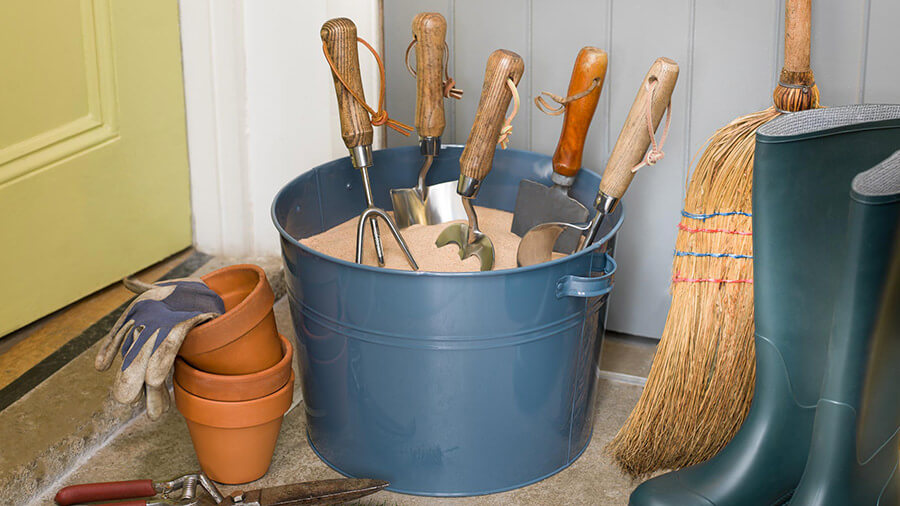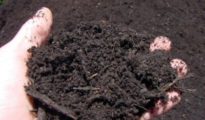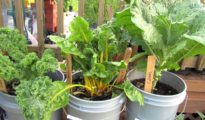Are you ready to take your gardening skills to the next level? We know you are! After all, every seasoned gardener knows that having the right tools is key to success. Whether you've been gardening for a lifetime, or you've just started, there are always more things to know! If you're new to gardening, the amount of gardening tools available can be a tad overwhelming, but to start, you only really need a few basic gardening tools. Here are five must-have gardening tools that will make your life easier and help you achieve a beautiful, thriving garden.

5 Must Have Gardening Tools
Garden fork: This multi-purpose tool is great for breaking up soil, planting bulbs, and cultivating weeds. Look for a fork with a durable, comfortable handle and sturdy tines.
Hand trowel: A hand trowel is a small, handy tool that is perfect for planting seedlings and small plants, as well as digging up weeds. Choose one with a strong, sharp blade and a comfortable grip.
Pruning shears: Pruning shears, also known as secateurs, are a must have for keeping your plants trimmed and healthy. Look for a pair with sharp, easy-to-use blades and a comfortable handle.
Hose and watering can: Proper watering is super important for a healthy garden, and a hose and watering can are must-have tools. Choose a hose with a good spray pattern and a durable watering can with a comfortable handle.
Garden gloves: Gardening can be tough on your hands, so it's important to protect them with a good pair of gloves. Look for gloves with a comfortable fit and good dexterity, as well as ones that provide protection against thorns and other hazards.
How to Use a Garden Fork
Wondering how exactly to use a garden fork? This little tool can do many things at once and is essential for any gardener. From breaking up soil to planting bulbs, a good garden fork can make your life easier and help you achieve a beautiful, thriving garden. Here are the different ways to use a garden fork:
- Break up soil: A garden fork is great for breaking up soil and preparing it for planting. Start by inserting the tines of the fork into the soil and using a twisting motion to loosen it up. Be sure to work in small sections, as it can be tough on your back to do too much at once.
- Plant bulbs: A garden fork is also perfect for planting bulbs. Start by using the fork to loosen the soil in the area where you want to plant the bulbs. Then, use the fork to create a hole for each bulb. Place the bulb in the hole and gently cover it with soil, using the fork to tamp it down.
- Cultivate weeds: A garden fork is great for cultivating weeds, especially in areas where you don't want to use chemicals. Simply insert the tines of the fork into the soil around the weed and use a twisting motion to loosen it up. Be sure to get as much of the root as possible to prevent the weed from growing back.
- Aerate soil: If your soil is compacted or has a lot of clay, a garden fork can help you aerate it. Use the fork to gently loosen the soil, being careful not to damage any roots or plants. This will help improve drainage and allow water and nutrients to reach the root zone.
How to Use a Hand Trowel
A hand trowel is a small, handheld tool that is another must have if you're going to get into gardening. It's amazing for planting seedlings and small plants, as well as digging up weeds. Here are some tips for how to use a hand trowel:
- Planting seedlings: To plant seedlings with a hand trowel, start by loosening the soil in the area where you want to plant. Then, use the trowel to create a small hole for the seedling. Place the seedling in the hole and gently cover it with soil, using the trowel to tamp it down.
- Planting small plants: To plant small plants with a hand trowel, start by loosening the soil in the area where you want to plant. Then, use the trowel to create a hole that is large enough for the roots of the plant. Place the plant in the hole and gently cover it with soil, using the trowel to tamp it down.
- Digging up weeds: To use a hand trowel to dig up weeds, start by inserting the blade of the trowel into the soil around the weed. Use a twisting motion to loosen the weed and its roots, being careful not to damage any nearby plants. Once the weed is loose, use the trowel to gently lift it out of the ground.
- Transplanting plants: A hand trowel is also great for transplanting plants. Start by using the trowel to gently loosen the soil around the plant you want to transplant. Then, use the trowel to carefully lift the plant out of the ground, being sure to get as much of the root ball as possible. Finally, use the trowel to plant the plant in its new location, following the same steps as for planting seedlings or small plants.
How to Use Pruning Shears
Pruning shears are another must have tool for any gardener. They are used to trim and shape plants, as well as remove dead or damaged growth. Here are some tips for how to use pruning shears:
- Choose the right type of pruning shears: There are two main types of pruning shears: bypass and anvil. Bypass shears are great for cutting live branches, as they have a blade that passes by a flat surface and makes a clean cut. Anvil shears are better for dead or woody growth, as they have a blade that comes down onto a flat surface and crushes the stem.
- Make the cut in the right place: When pruning with shears, it's important to make the cut in the right place. Generally, you should make the cut just above a bud or leaf node, as this will encourage new growth. Avoid leaving a stub, as this can lead to disease and can prevent the plant from healing properly.
- Keep the blades clean and sharp: To get the best performance from your pruning shears, it's important to keep the blades clean and sharp. Wipe the blades with a cloth after each use and oil them periodically to prevent rust. If the blades start to feel dull, use a sharpening stone or take them to a professional to have them sharpened.
- Use proper technique: When using pruning shears, it's important to use proper technique to avoid injury and get the best results. Hold the shears with the handles in your dominant hand and the blades facing away from your body. Use a steady, controlled motion to make the cut, and avoid overextending your arms.



















